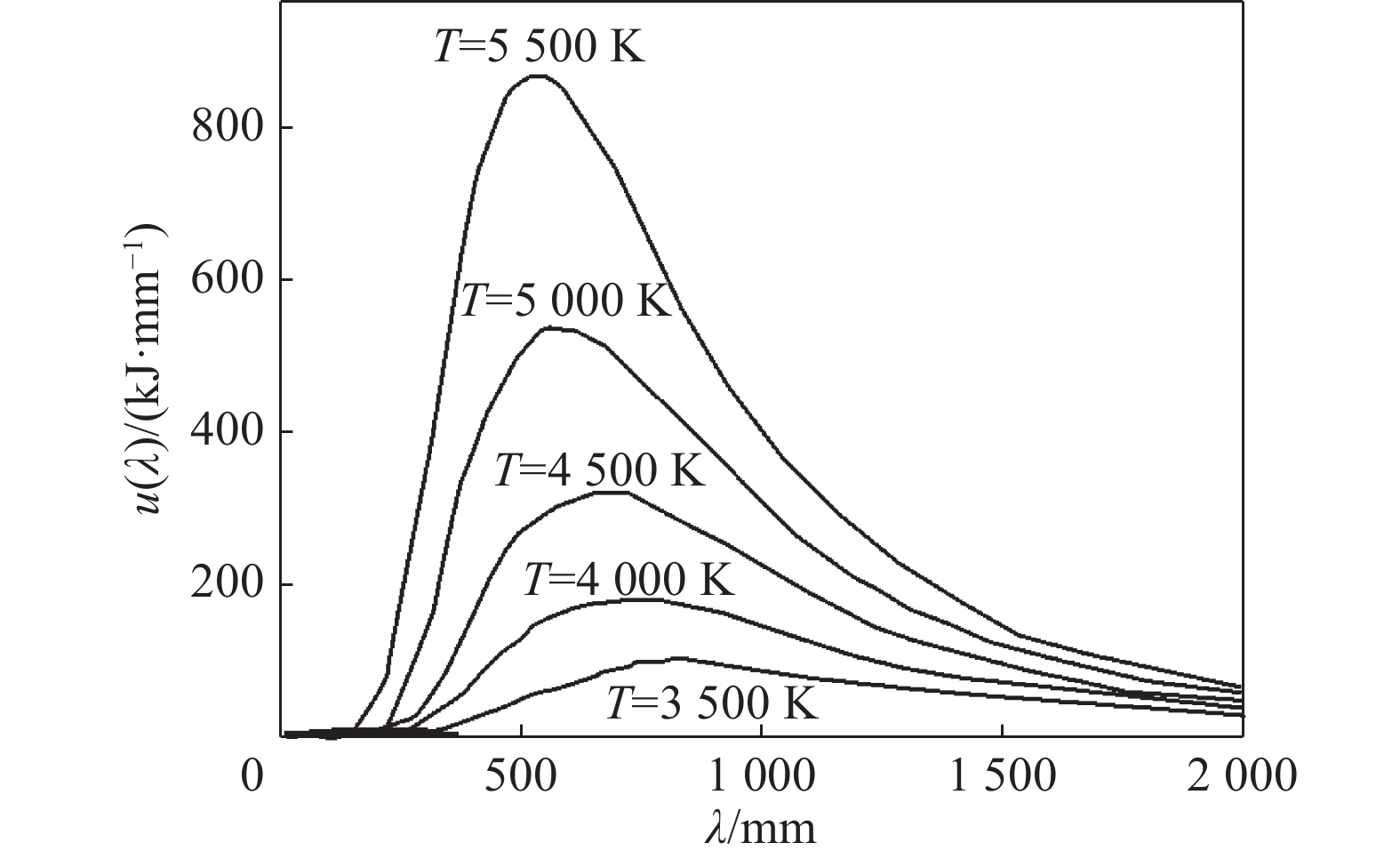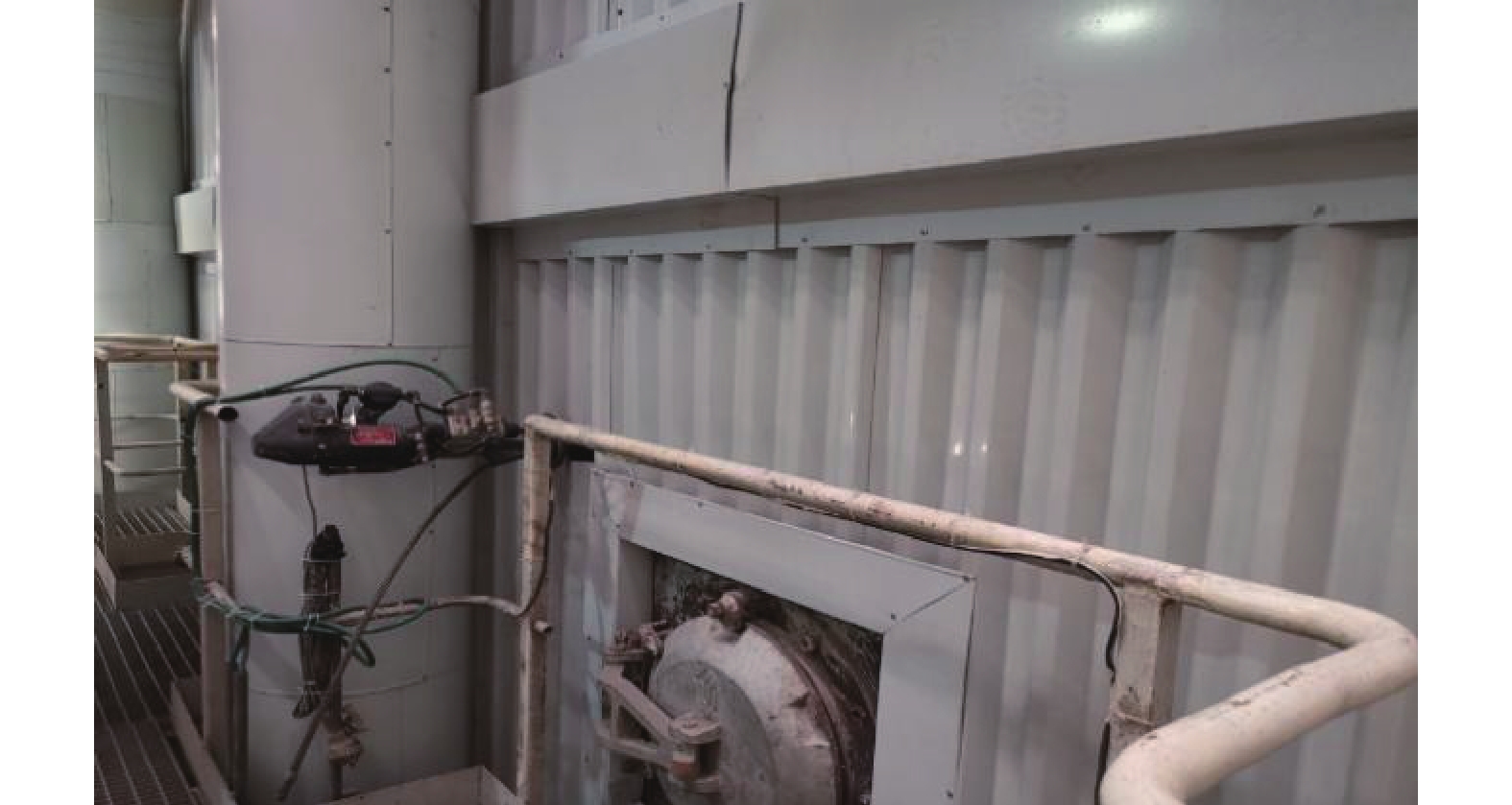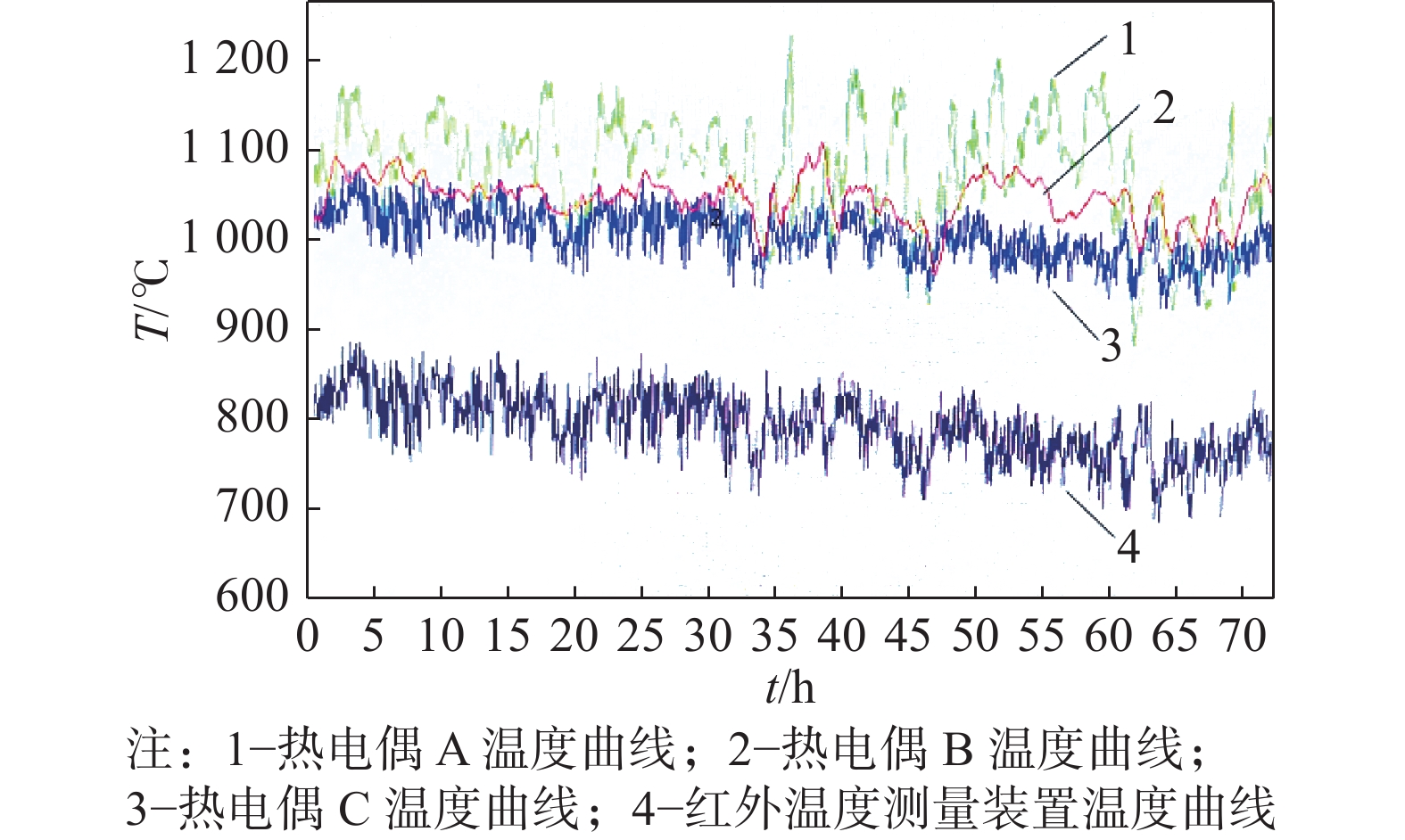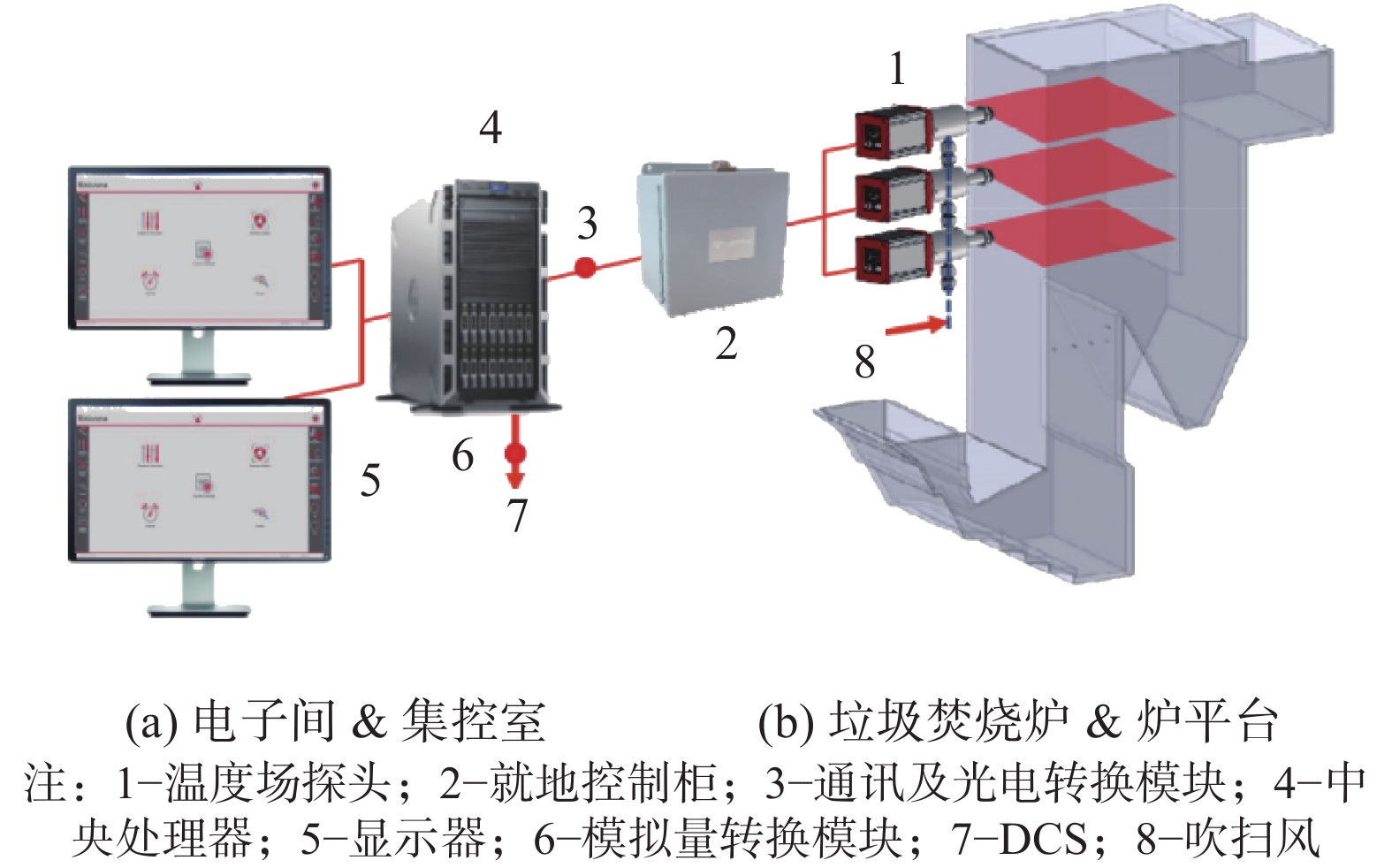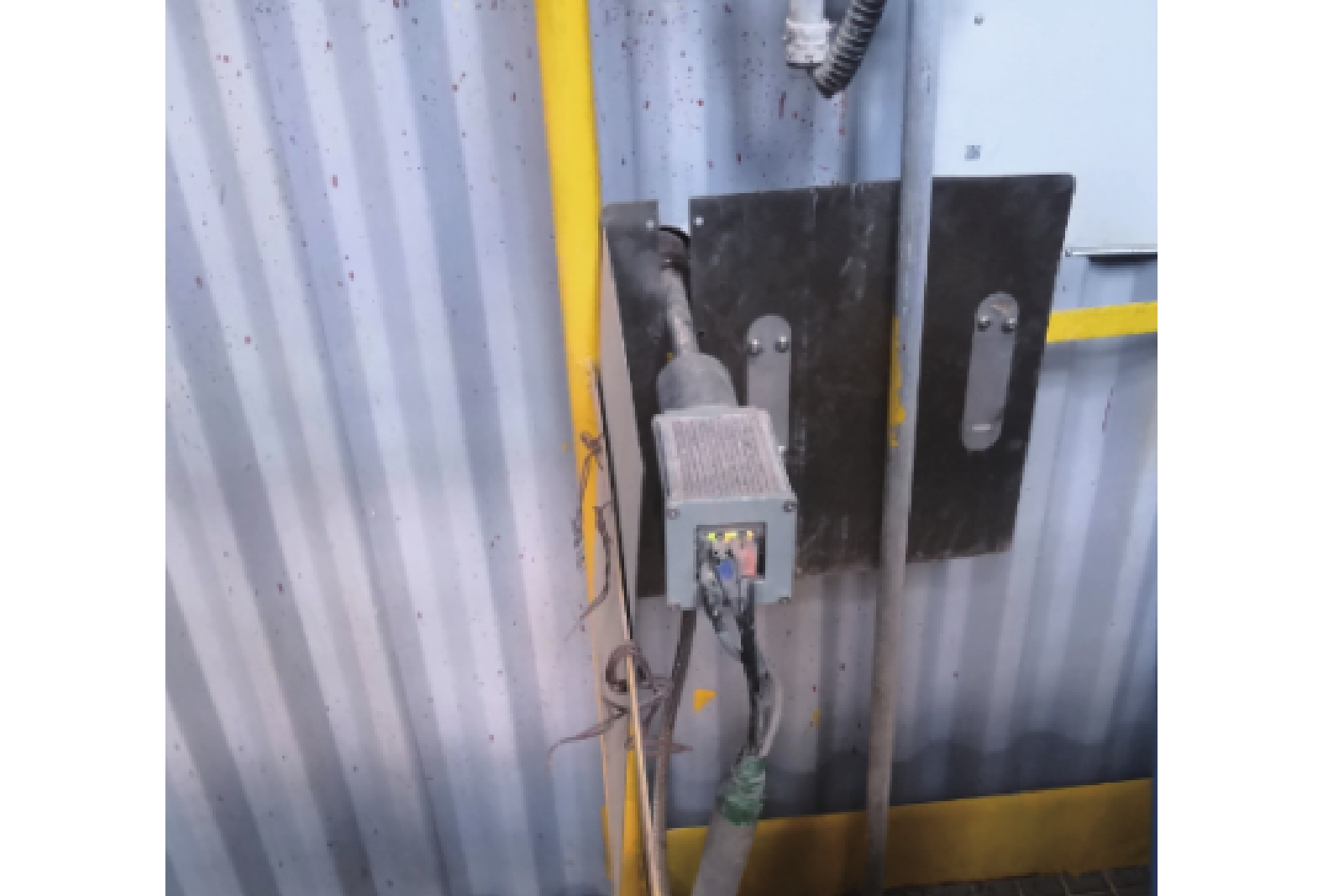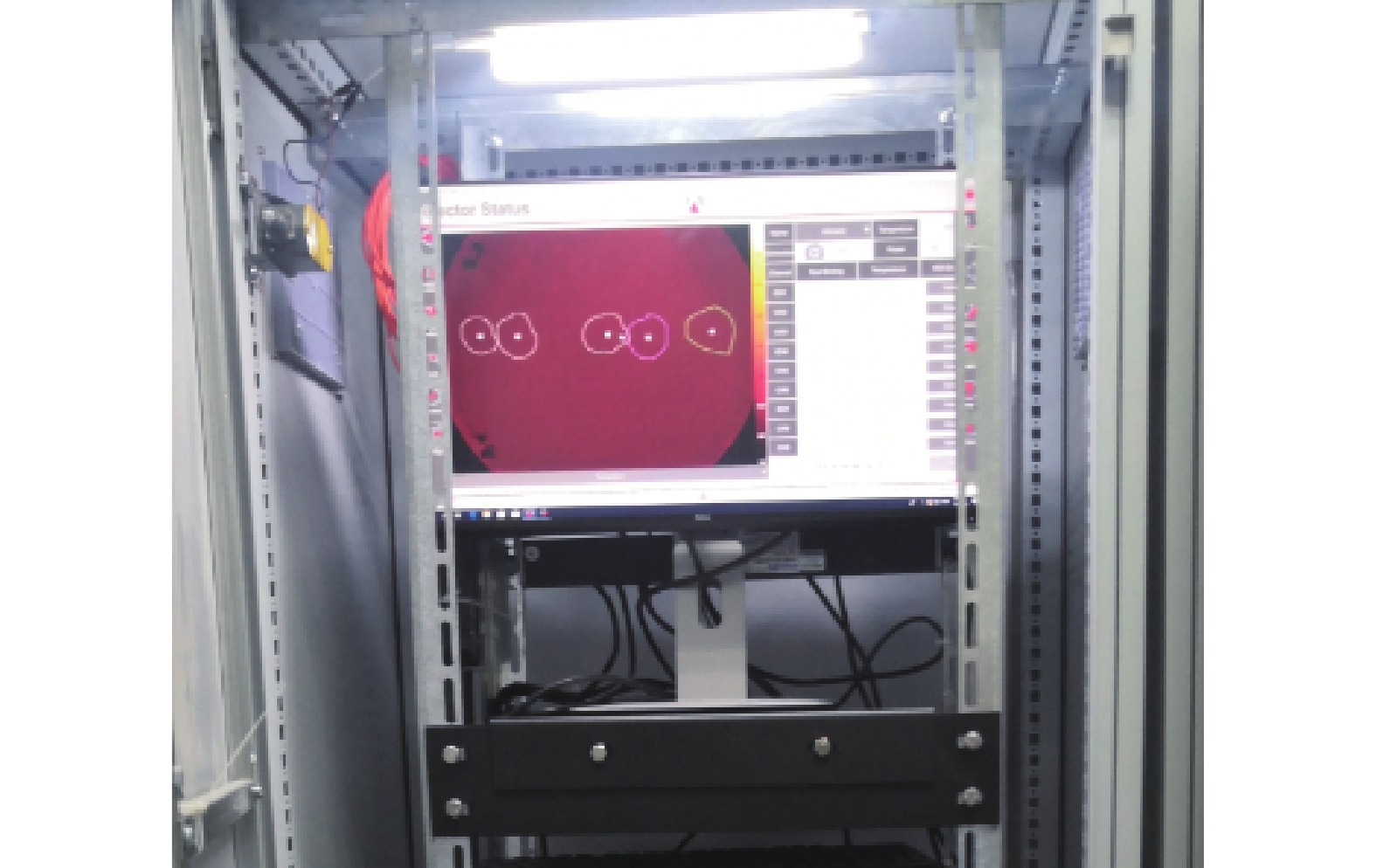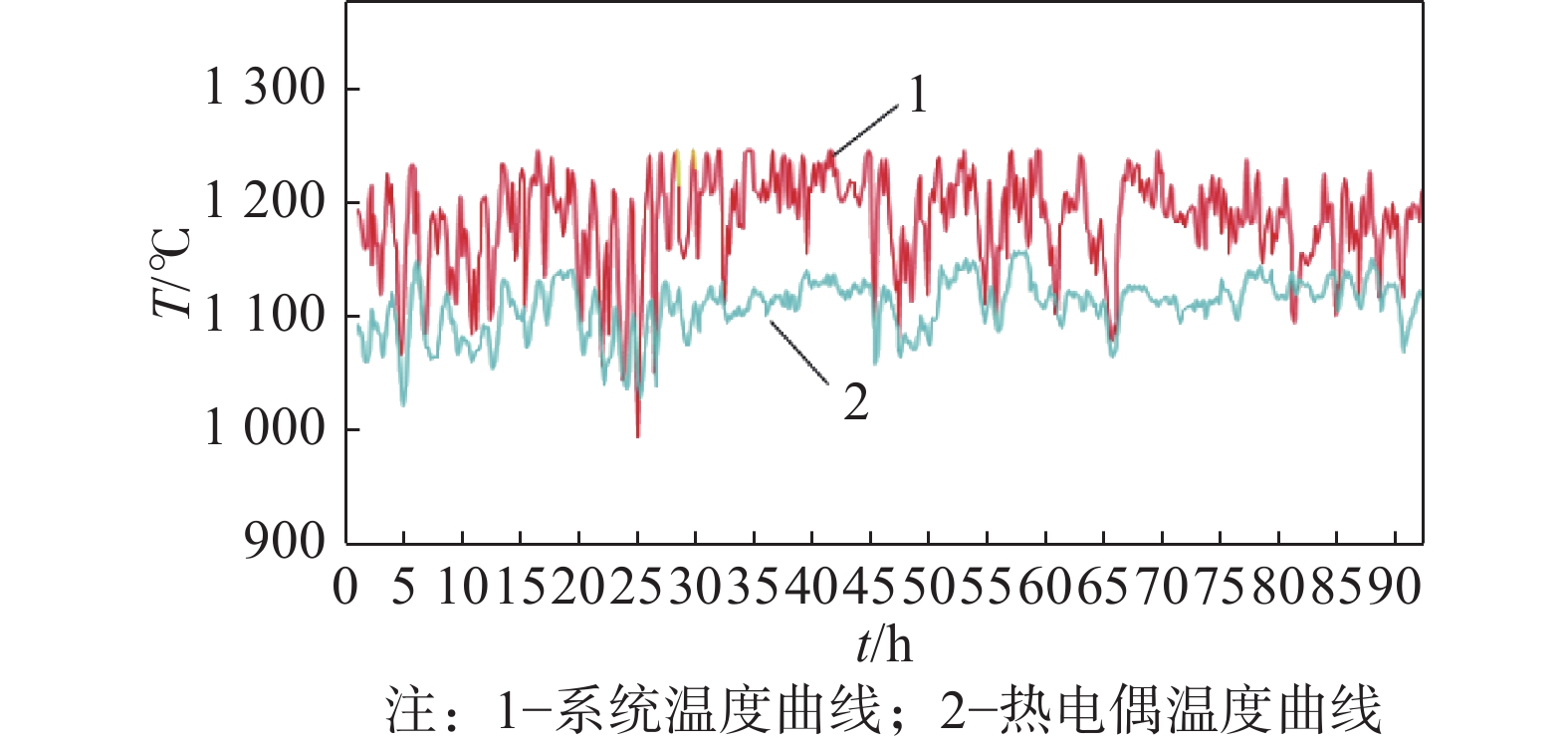-
随着国内城市化水平的快速推进,如何有效实现城市生活垃圾无害化处理已成为困扰城市发展的重大问题。对城市生活垃圾进行减量化、资源化、无害化处理需求的日益增长,垃圾焚烧作为主要的生活垃圾处理方式之一,近年来发展十分迅速。
国内近些年来新建的垃圾焚烧发电项目以炉排炉为主。垃圾焚烧过程易产生二噁英,二噁英为持久性有机污染物,具有高毒、难降解、可生物累积、可远距离传输等特性,对生态环境和人体健康具有很大的危害。目前主要通过控制焚烧炉炉膛内烟气温度及停留时间,有效减少二噁英产生量,以满足环保标准,因此炉膛烟温测量的准确性和实时性尤为重要[1]。
保证垃圾焚烧炉炉膛内温度在不低于850 ℃条件下,滞留时间不小于2 s,这对于抑制二噁英的生成有非常重要的作用。而另一方面,若炉膛内温度过高,又会产生结焦和NOx量增加等问题。因此,如何测量并控制炉膛烟温尤为重要,目前国内焚烧炉的烟气温度主要采用热电偶,分层多点布置的测量方式。由于焚烧炉产生的烟气具有温度高、含尘量高、腐蚀性高等特点[2-3],常规的热电偶易损耗,热电偶的维护量较大,维护成本高。随着温度测量技术的发展,目前已有一些新的非接触式测量方式,如红外烟气测量、超声波烟温测量用于传统的燃煤电厂并取得良好的效果,文章主要介绍了传统测温方式存在的问题,并介绍了基于红外技术的两种先进的炉膛测温方式技术特点、应用情况及技术对比,探索改进炉膛烟温的测量手段。
-
采用插入式热电偶是目前垃圾焚烧炉炉膛烟温最主要的测量方式。热电偶是目前广泛应用于各工业领域的测温产品,其基本原理为:两种不同成份的导体(称为热电偶丝材或热电极)两端接合成回路,当两个接合点的温度不同时,在回路中就会产生电动势,通过测量回路中的电动势,再对电势差和温度经过标准的换算,即可测量出被测介质的温度[4]。
根据国标《生活垃圾焚烧污染控制标准》(GB 18485—2014)的要求,炉膛内的焚烧温度应大于等于850 ℃,其检验方法为在二次空气喷入点所在断面、炉膛中部断面和炉膛上部断面至少选择两个断面分别布设监视点,实行热电偶实时在线测量,同时应根据炉膛设计书检验和制造图核验炉膛内焚烧温度监测点断面间对的烟气停留时间,确保停留时间大于等于2 s。以国内某600 t/d的炉排炉为例,其烟温测点布置如图1所示:
目前主流大型焚烧炉的炉膛烟温一般为3层测点,每层布置3~4个热电偶,采用插入式热电偶主要存在的问题有:
1)长期以来,我国的垃圾分类工作未广泛开展,垃圾具有的含水量高,成分复杂的特点,焚烧炉产生的烟气中含有较高浓度的氯化物、硫化物及飞灰,具有极高的腐蚀性,极易对热电偶产生高温腐蚀,造成热电偶寿命较短[5-6]。
2)由于大型焚烧炉体积较大,热电偶的插入深度有限,无法测量炉膛中心温度,仅能测得炉膛壁区域的温度,难以真实反映整个炉膛的温度,而烟气中的碱金属灰易粘附结焦在热电偶上,造成腐蚀和导致热电偶测量的温度传递速率降低,温度较实际温度偏低,影响环保考核。
据调研,目前焚烧炉的炉膛烟温平均每个热电偶的使用寿命约为3~4个月,即使采用一些特殊的合金护套或双层护套的热电偶,通常也只能使用5~6个月,且热电偶一旦损坏,为了不影响机组的正常运行和上传环保局数据的准确性,需在第一时间更换,热电偶的维护量较大,维护成本高,同时由于焚烧炉炉内温度较高,如炉膛负压控制不当,高温烟气溢出,可能烫伤维护人员,存在一定的安全隐患。
-
自然界中任何物体在其温度高于绝对零度时,会不停的向外发出红外辐射,红外测温的基本原理就是通过对物体自身红外辐射能量的测量,获取其表面的温度信息[7]。
根据普朗克定理[8],黑体的光辐射功率和绝对温度T之间的关系为:
$$ {P}_{b}\left(\lambda \text{,}T\right)=\frac{{C}_{1}}{{\lambda }^{5}\left({e}^{\frac{{c}_{2}}{\lambda T}}-1\right)} $$ (1) 式中:
$ {P}_{b}\left(\lambda ,T\right) $ —辐射出射度(W/m2·μm);$ \lambda $ —波长(μm);T —绝对温度(K);
${C}_{1}$ 、${C}_{2}$ —辐射常数,其中${C}_{1}=3.743\times{10}^{8} (\text{μ}{\mathrm{m}}^{4}\cdot \mathrm{W}/{{\rm{m}}}^{2});{C}_{2}=1.439\times {10}^{4}(\text{μ}\mathrm{m}\cdot \mathrm{K})$ 。根据公式(1)可得图2的关系曲线[9]。在绝对温度为T, 波长为
$ \lambda $ 时,随着波长的增加,黑体的光谱辐射力先增大后减小,光谱辐射力最大处λm 与热力学温度T的关系符合和维恩位移定律:$$ {\mathrm{\lambda }_\mathrm{m}}\cdot T=2.897\;6\times {10}^{6}\;\mathrm{n}\mathrm{m}\cdot \mathrm{K} $$ (2) 根据斯特藩-玻尔兹曼定理[10],黑体的辐射力和热力学温度的关系如下公式所描述:
$$ {P}_{{\rm{b}}}\left(T\right)=\mathrm{\sigma }{T}^{4} $$ (3) 式中:
${P}_{{\rm{b}}}\left(T\right)$ —温度为T时,单位时间从黑体单位面积上辐射出的总辐射能,称为总辐射度,单位为W/m2;$ \mathrm{\sigma } $ —斯特藩-玻尔兹曼常量,$\mathrm{\sigma }=5.67\times {10}^{-8} $ (W/m2·K4);T —物体温度(K)。
在相同条件下,物体在同一波长范围内辐射的功率小于黑体的功率,用它们的比值称为实际物体的黑度,可表征物体接近黑体的程度。
$$ \mathrm{\varepsilon }\left(\lambda \right)={P}\left(T\right)/{P}_{{\rm{b}}}\left(T\right) $$ (4) 由于物体的单色黑度
$\mathrm{\varepsilon }\left(\lambda \right)$ 是不随波长变化的常数,即$\mathrm{\varepsilon }\left(\lambda \right)$ =$\mathrm{\varepsilon }$ ,称此为灰体,一般灰体$0 < \mathrm{\varepsilon } < 1$ ,由式(4)可得$$ {P}\left(T\right)=\mathrm{\varepsilon }\mathrm{\sigma }{T}^{4} $$ (5) 可知所测物体的温度为:
$$ {T}=\sqrt{\frac{P\left(T\right)}{\mathrm{\varepsilon }\sigma }} $$ (6) 可见,任何物体辐射的红外能量大小与其表面温度都有着密切的关系且辐射出的红外能量与温度成正比,可以根据物质辐射出的红外能量得出物质的温度。
-
红外测温仪一般由光学系统、光电探测器、信号放大器及信号处理、显示输出等部分组成[11],如图3所示。视场内的目标红外辐射能量通过光学系统聚焦在光电探测器上并转变为相应的电信号,该信号经过放大器和信号处理电路进行处理,通过测温仪内置的算法和目标发射率校正后,可计算出被测目标的温度值。
由于锅炉燃烧中有众多的产物,而 CO2 气体是所有化石燃料燃烧的副产品,其光谱为强而窄的红外线谱线,目前多数红外炉膛烟温测量装置均采用测量CO2气体的温度来得到炉膛烟气温度[12]。
通过特制的滤光器和红外传感器,在锅炉燃烧过程中过滤并处理视场内固体和气体辐射出的扎乱的广谱红外信号,只接收炉膛中热CO2烟气辐射出的红外波谱,准确的显示出测量区域CO2烟气辐射出的红外能量,并通过仪器特有的功能计算出烟气温度,将它转换成标准的4~20 mA直流信号输出。
相对于热电偶,红外传感器响应时间较短,并可测量仪器视场内的平均温度和峰值。
在线式红外炉膛烟温测量装置采用一体化结构设计,传感器和红外薄膜电路集成组装在牢固的铝制冷却套内,在现场接入1组压缩空气源或空气冷却系统,对其进行冷却和吹扫,即可长期稳定运行。
-
据调研,在燃煤电厂方面,红外炉膛烟温测量装置基本取代了传统的高温探针,得到了广泛的应用,有较多良好的应用业绩;在垃圾焚烧发电厂方面,目前有个别垃圾焚烧炉尝试采用红外测温装置代替个别炉膛烟温热电偶,如国内某个垃圾电厂应用了1套红外炉膛烟温测量装置,安装实景如图4所示。据调研数据,其温度测量值与热电偶数值相比稍低,并出现局部跳变的现象,对此现场工程师分析,由于目前采用的红外炉膛烟温测量装置为燃煤电厂专用型号,燃煤电厂的烟气CO2浓度高于垃圾焚烧电厂的烟气CO2浓度,需要进一步调试改进,但变化趋势基本与热电偶一致,如图5所示。其优点在于维护量低,主要维护工作量为视场短管,如有结焦,积灰,需人工捅灰,其缺点在于价格较高。
-
红外测量方式的主要特点有:
1)红外测温装置可测量视场内烟道垂直截面上全部烟气的平均温度值,相比于点温度,更能真实反映炉膛内温度情况。
2)红外测温装置为非接触式测量,没有设备深入炉内,故不会受到炉内烟气对设备的破坏,运行稳定,设备可靠,不需要频繁维护和更换。
-
双色比色法测温与红外测温的理论基础均基于黑体热辐射的基本定律。根据普朗克定律和维恩位移定律,当
$ {e}^{\tfrac{{c}_{2}}{\lambda T}}\gg 1 $ 时,物体的辐射能可简化表述为[13-14]:$$ {P}\left(\lambda ,\,T\right)=\varepsilon \left(\lambda \right)\frac{{C}_{1}}{{\lambda }^{5}\left({e}^{\tfrac{{c}_{2}}{\lambda T}}\right)} $$ (7) 经过滤光片,可测得温度为T的高温物体在特定波长为λ1、λ2下的辐射能分别为
$P\left({\lambda }_{1},\,T\right)$ 和$P\left({\lambda }_{2},\,T\right)$ ,从而可得两者的温度比为:$$ \frac{P\left({\lambda }_{1},\,T\right)}{P\left({\lambda }_{2},\,T\right)}=\frac{\varepsilon \left({\lambda }_{1}\right){{\lambda }_{2}}^{5}\left({e}^{\tfrac{{c}_{2}}{{\lambda }_{2}T}}\right)}{\varepsilon \left({\lambda }_{2}\right){{\lambda }_{1}}^{5}\left({e}^{\tfrac{{c}_{2}}{{\lambda }_{1}T}}\right)} $$ (8) 在比色测温法中,选用的相近波长λ1、λ2,可认为
$\varepsilon \left({\lambda }_{1}\right)\approx \varepsilon \left({\lambda }_{2}\right)$ ,把物体近似当做灰体来处理,上述公式可求得:$$ {T}=\frac{{C}_{2}(\tfrac{1}{{\lambda }_{2}}-\tfrac{1}{{\lambda }_{1}})}{{\rm{ln}}\tfrac{P\left({\lambda }_{1}\text{,}T\right)}{P\left({\lambda }_{2}\text{,}T\right)}-5{\rm{ln}}\tfrac{{\lambda }_{2}}{{\lambda }_{1}}} $$ (9) 式(9)即为双色比色法测温的基本原理公式,单位为K。
-
双色比色法温度场测量装置采用温度场探头获取温度场数据,通过网络传输至后台服务器,由后台服务器进行数据处理分析,从而计算出炉膛温度数据和温度场图像[15]。系统架构如图6所示。
通过在炉膛适当的位置开孔或利用已有的备用孔,安装温度场探头,由温度探头采集炉膛可见区域的温度场图像,并传输至就地控制柜,在就地控制柜进行信号的光电转换,将温度场测量数据远距离传输至专用服务器中进行分析,从而为用户提供相应的温度场数据和图像。
-
目前国内双色比色法温度场测量装置产品较少,特别具有垃圾电厂应用业绩的产品更是屈指可数,就调研了解,目前国内某垃圾电厂应用了1套高精度的双色法温度场测量系统,其探头安装在原炉膛右墙中部热电偶测点位置,实景图如图7所示;机柜及现场系统温度场实景图如图8所示。
图9为从系统温度场图像中选取的一点与附件热电偶的温度对比曲线,从对比曲线来看,系统的温度测量值较热电偶略高,整体趋势与热电偶基本匹配,对此现场工程师分析由于热电偶仅深入炉膛20~30 cm,系统测量的是炉膛中心的温度,因此测量的温度值较热电偶较高。
-
1) 相比热电偶只是1个点,单套测量装置测量结果是一个平面温度场,而两个或以上的探头组成的温度场测量装置能够生成1个立体温度场,从而可得到整个炉膛的温度情况。
2) 相比传统热电偶,采用光学测量方式的比色法温度场测量装置温度响应速度更快。
3) 可通过在炉膛烟道上设置2个温度场探头建立立体的温度场图像,从而精确及时的反应炉膛内的温度情况,并可通过设置点位的温度及整体风量可以推算出烟气在烟道内的截面速度,保证850 ℃燃烧2 s以上的要求。
4) 通过烟道温度场的测量数据,可以帮助操作人员寻找较好地喷注SNCR的温度窗口,提升脱除NOx的效率,从而减少脱硝剂的用量、减轻氨逃逸的情况。
5) 非接触式的设计,并加载冷却吹扫风,极大地减少了腐蚀、过热及结焦的情况对于探头寿命的影响运行稳定,设备可靠,不需要频繁维护和更换。
-
传统热电偶作为目前垃圾焚烧炉的标配的炉膛烟温测量方式,应用广泛,产品成熟、可靠,价格较低,同时存在着易损坏、易结焦,维护工作量大的问题。近些年来,随着人工成本的上升以及环保指标监督的日趋严格,红外温度测量装置、双色比色法温度测量装置等维护量减少、温度信息丰富的新型测量装置具有较大的市场需求;随着新型测量装置的的应用和推广,其可靠性、精度不断得到提升和验证。同时随着对温度场应用的深入研究,用于对焚烧炉的燃烧优化和SNCR系统喷氨优化的算法也日趋完善,新型测量装置的经济性也在不断提升,具有良好的应用前景。
Application of Advanced Furnace Flue Gas Temperature Measuring Device in Refuse Incinerator
doi: 10.16516/j.gedi.issn2095-8676.2022.S2.008
- Received Date: 2021-11-11
- Rev Recd Date: 2022-03-10
- Available Online: 2023-01-04
- Publish Date: 2023-01-04
-
Key words:
- furnace flue gas temperature measurement /
- thermocouple for flue gas measurement /
- infrared thermometer /
- colorimetry temperature measurement device /
- thermal field
Abstract:
| Citation: | LIN Huanxin, ZHANG Baosong. Application of Advanced Furnace Flue Gas Temperature Measuring Device in Refuse Incinerator[J]. SOUTHERN ENERGY CONSTRUCTION, 2022, 9(S2): 46-52. doi: 10.16516/j.gedi.issn2095-8676.2022.S2.008 |




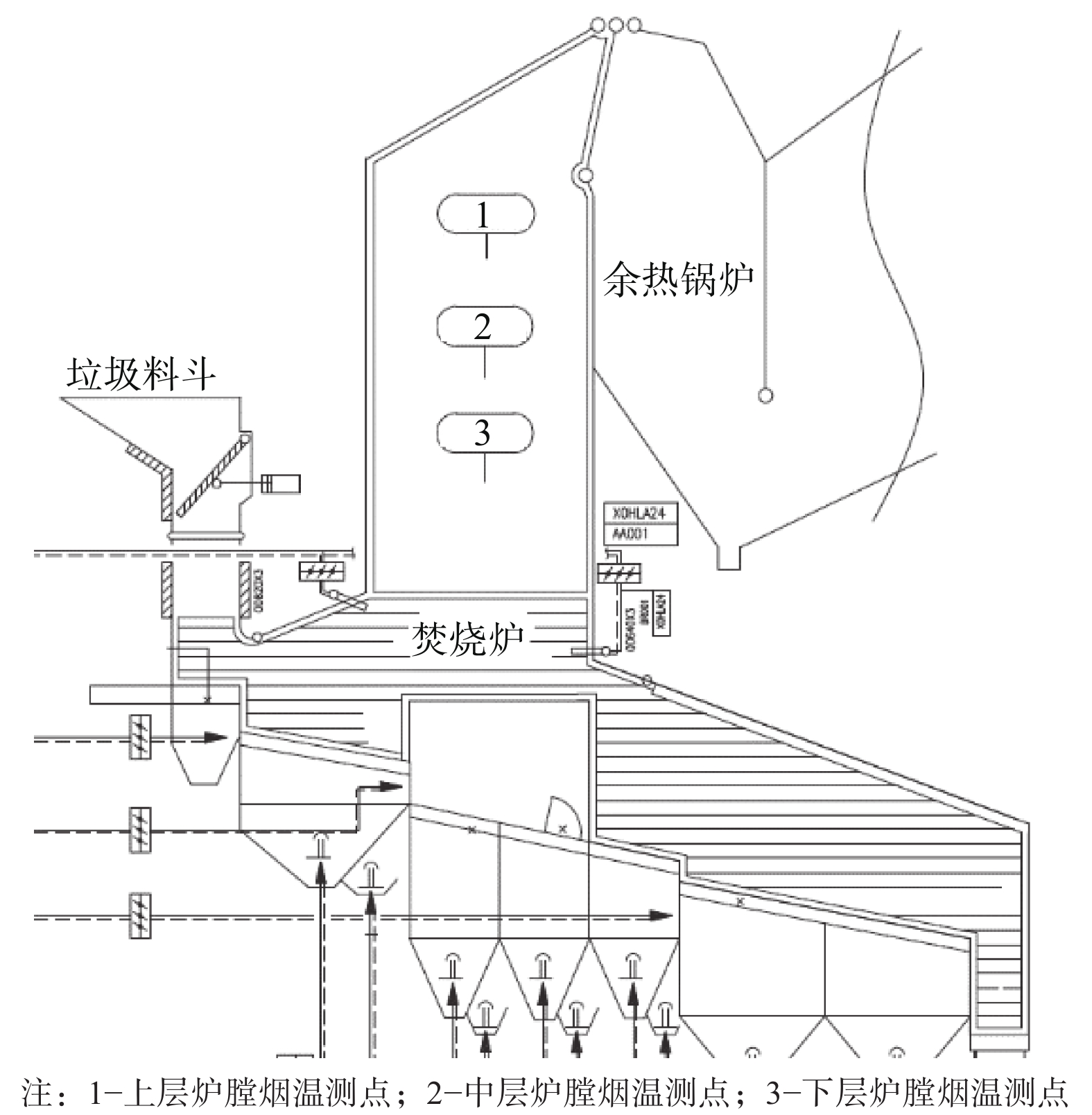

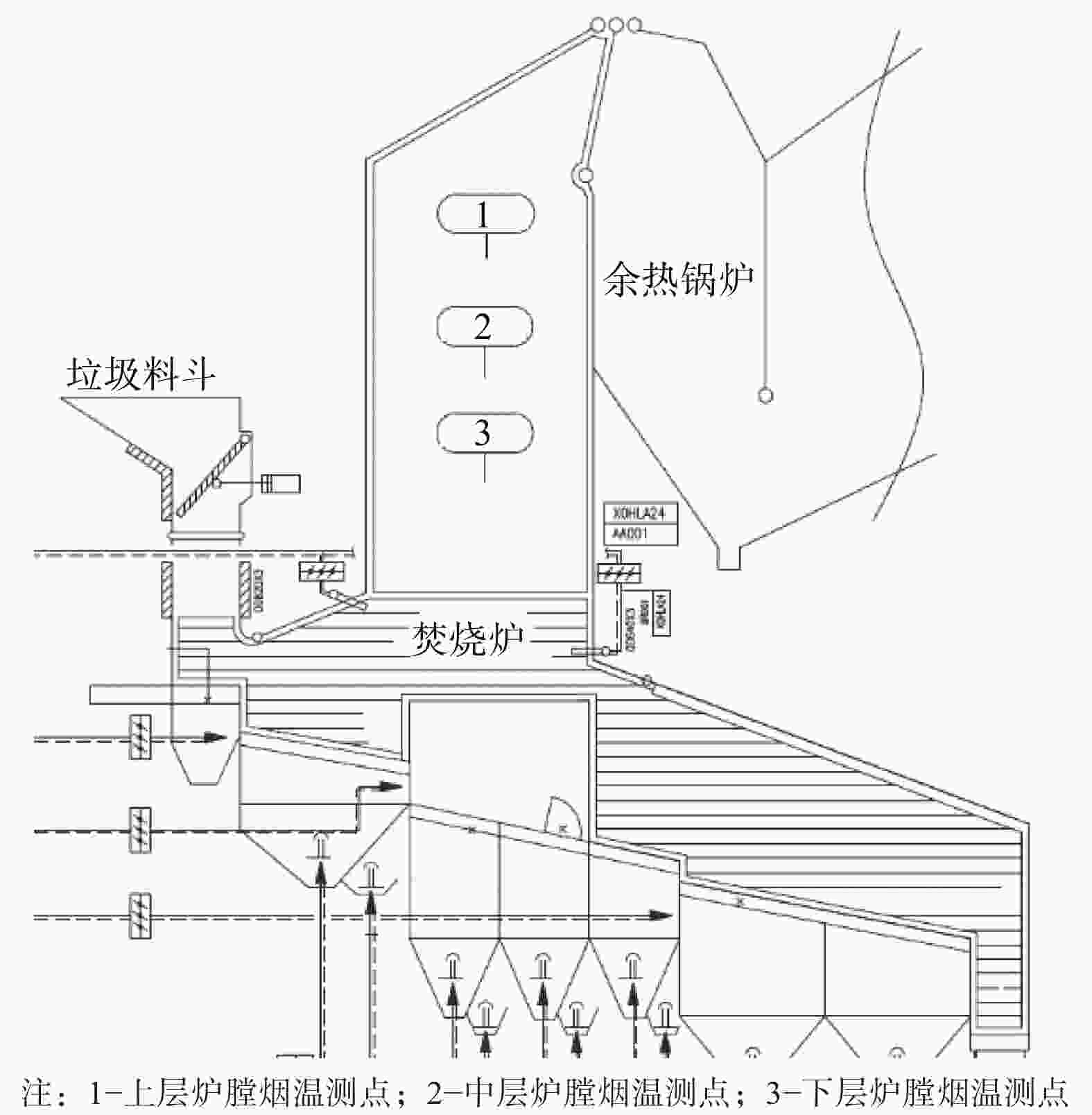







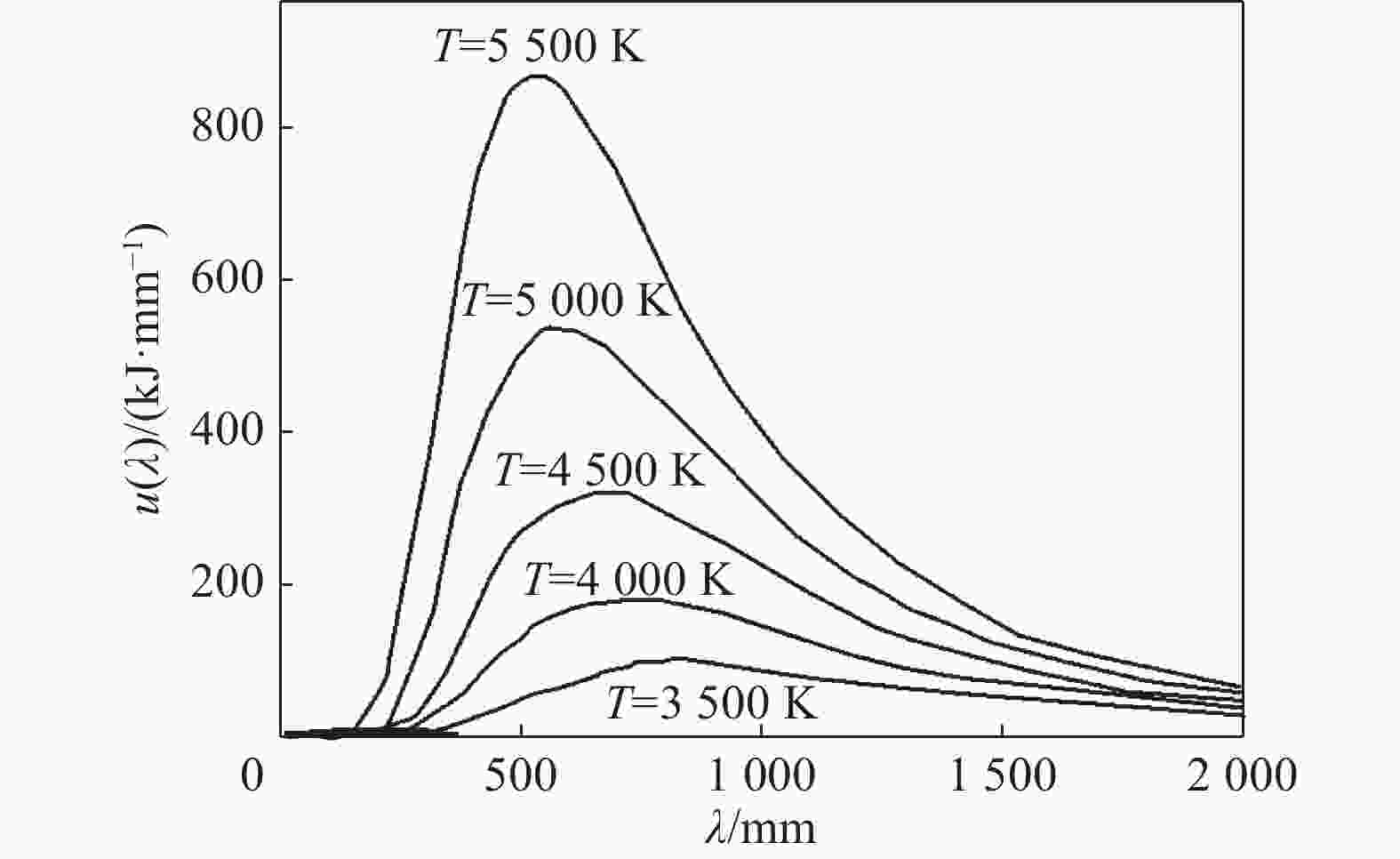













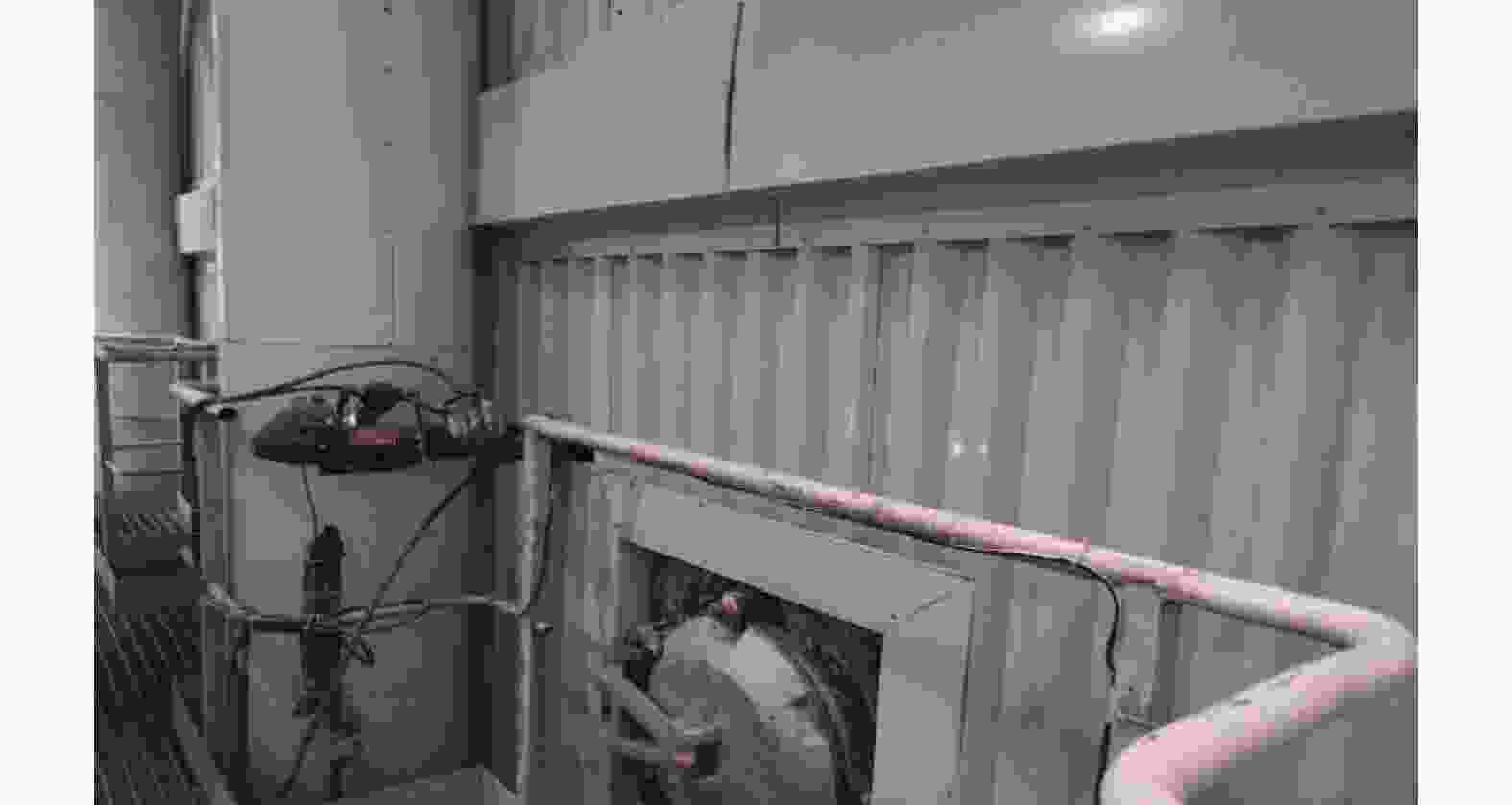
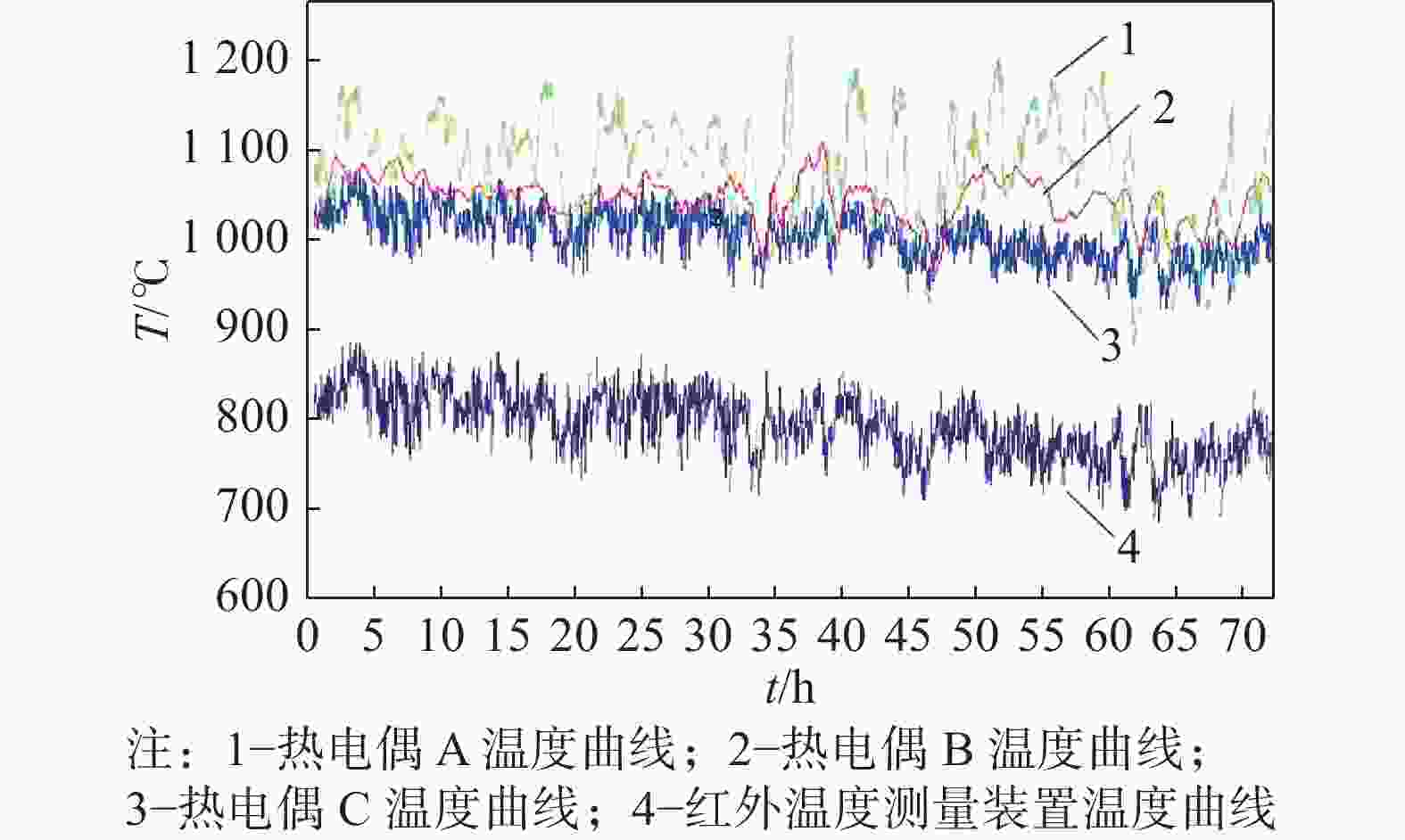







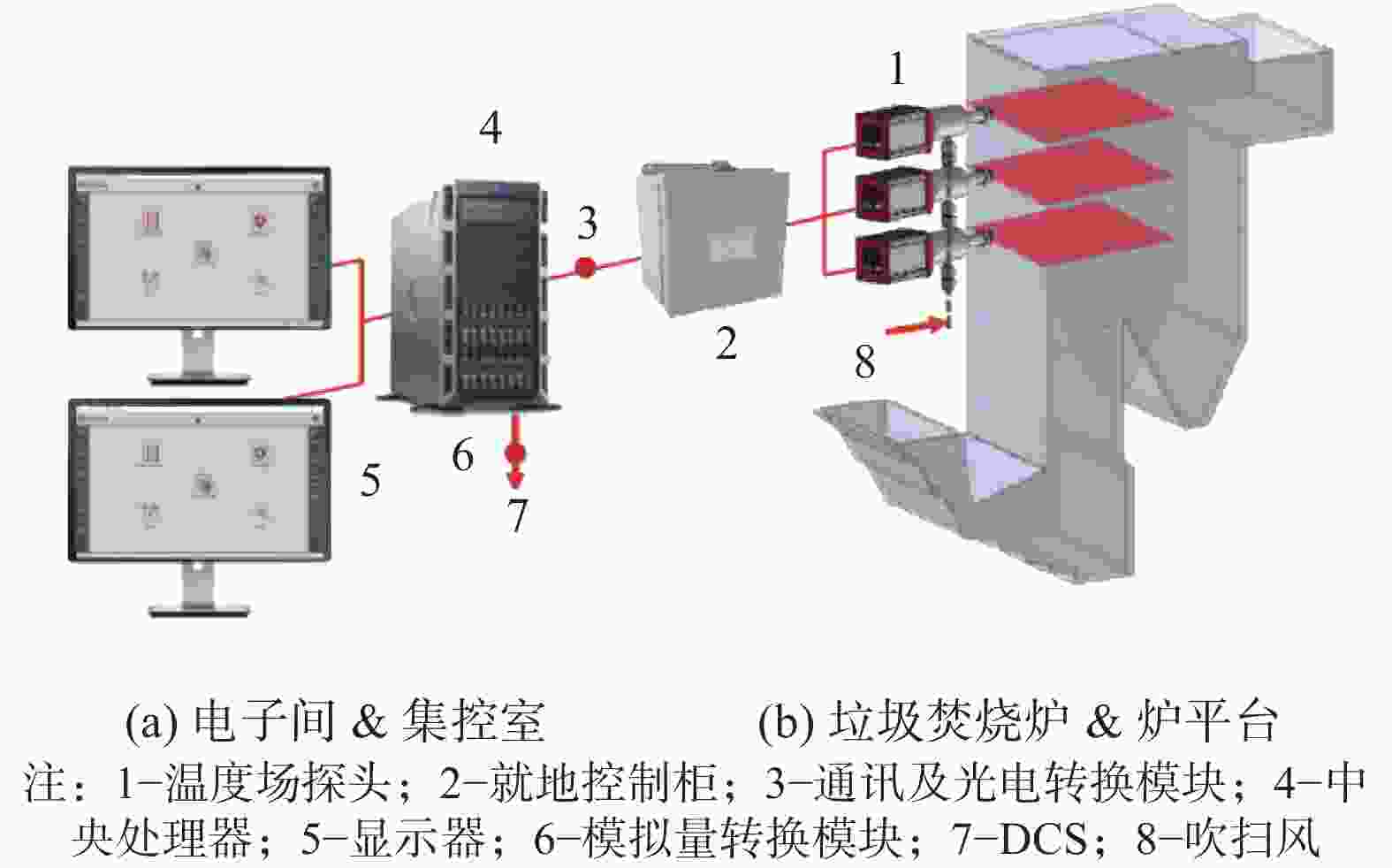
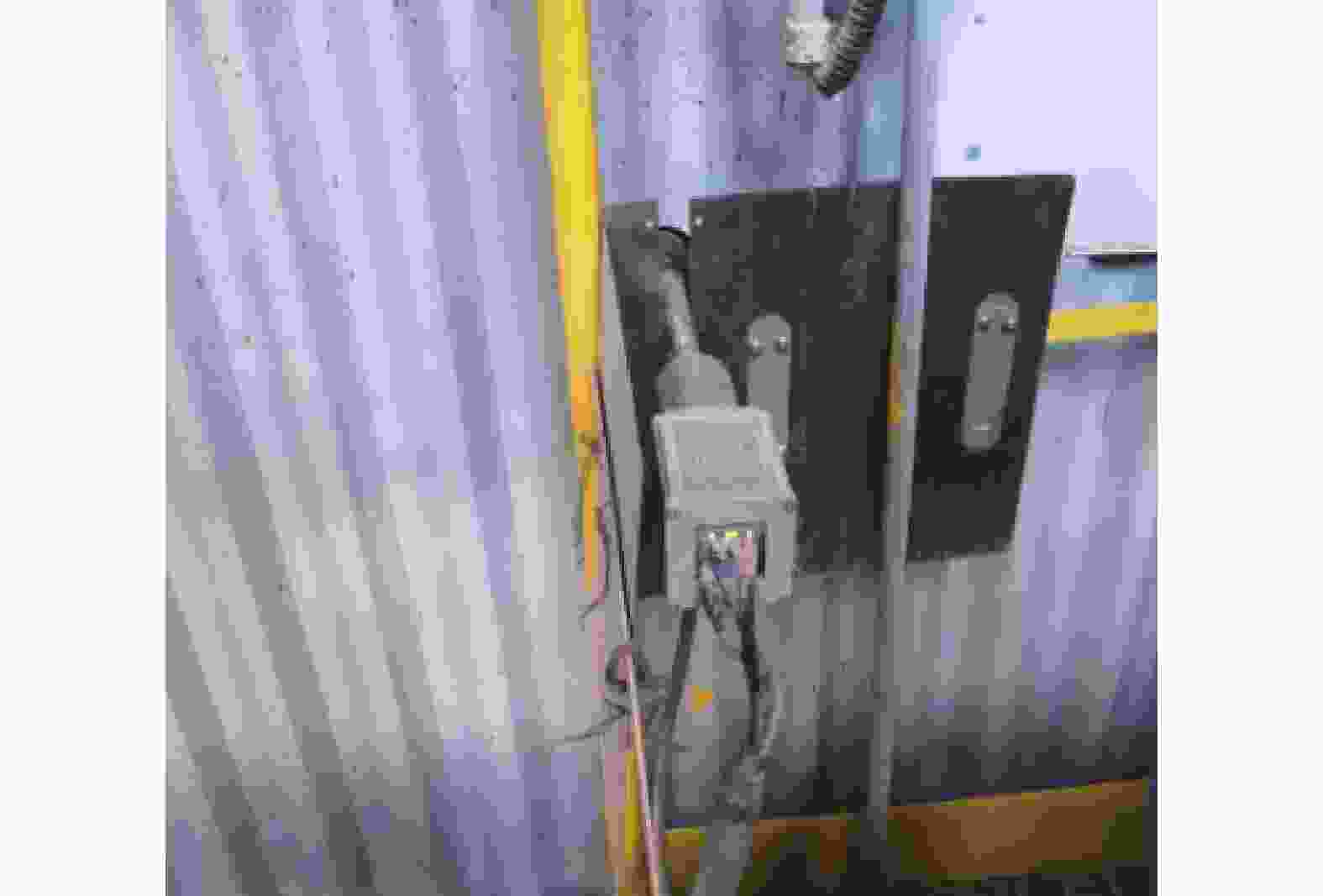
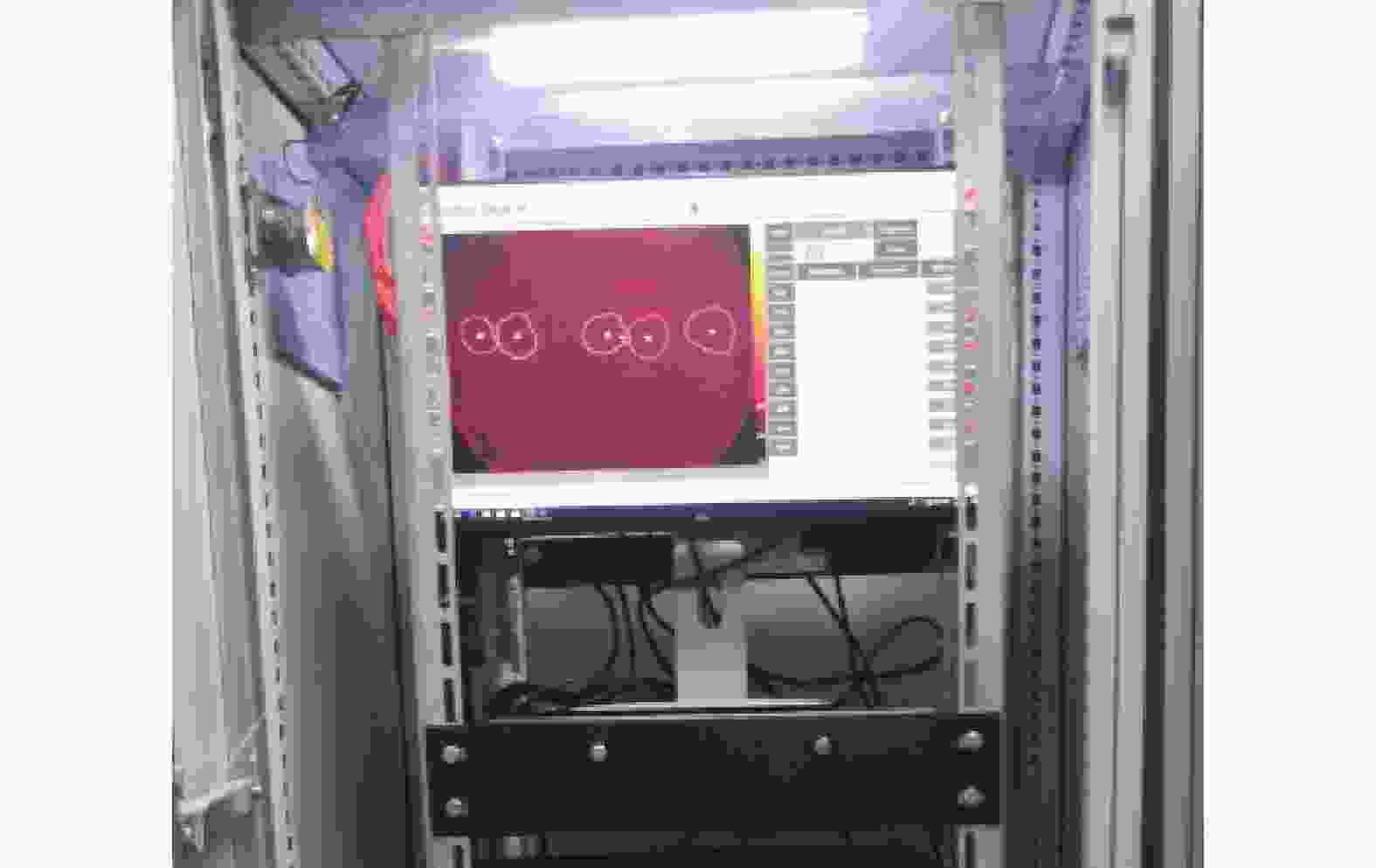
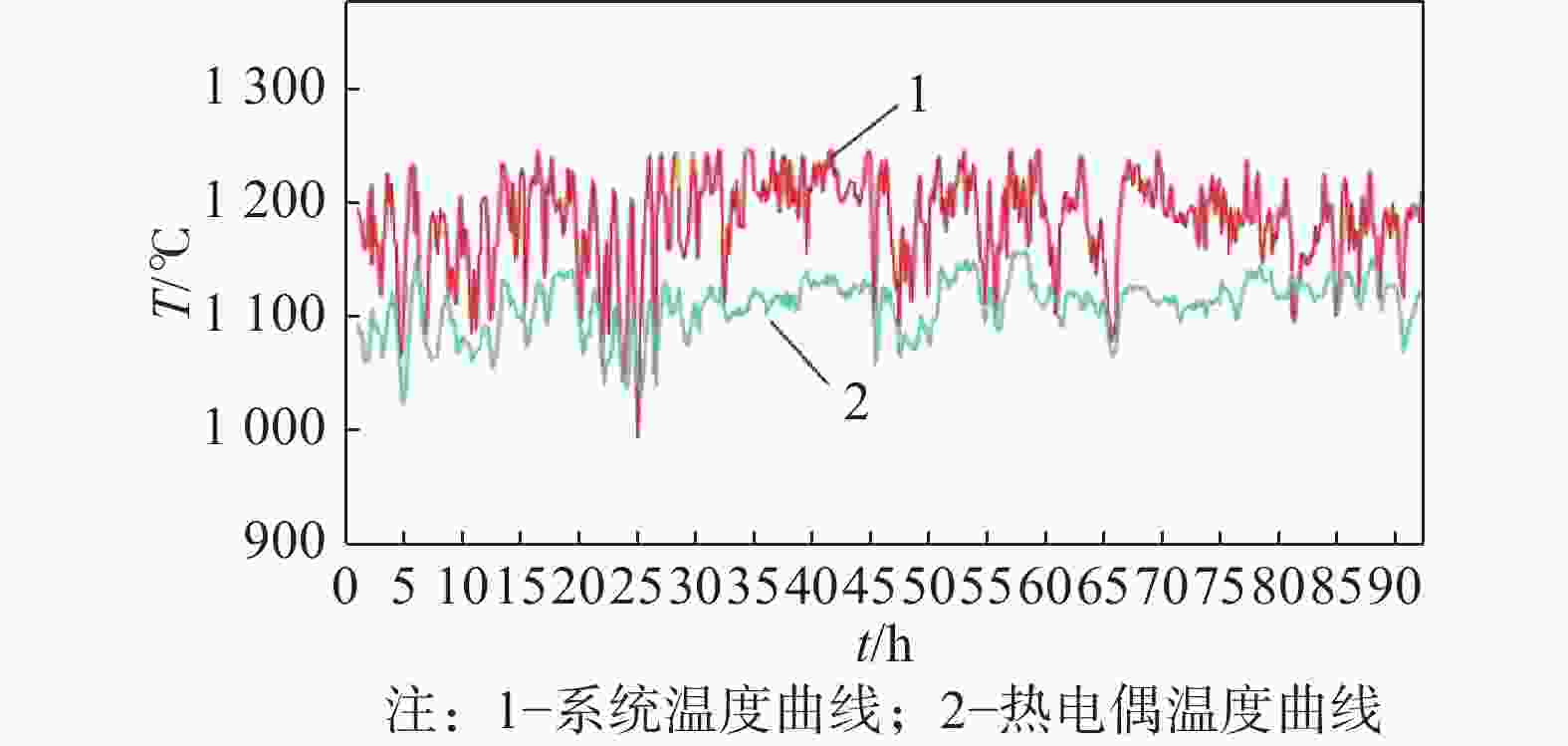

 DownLoad:
DownLoad:
